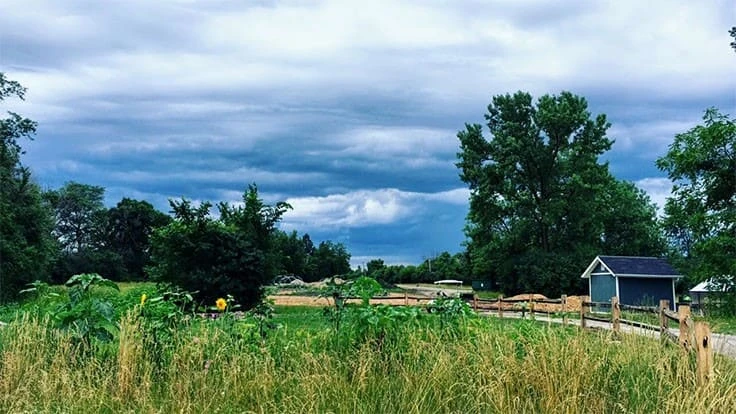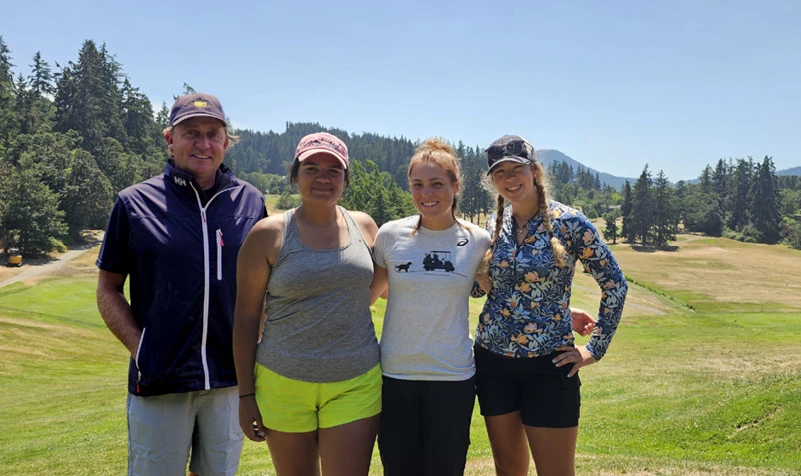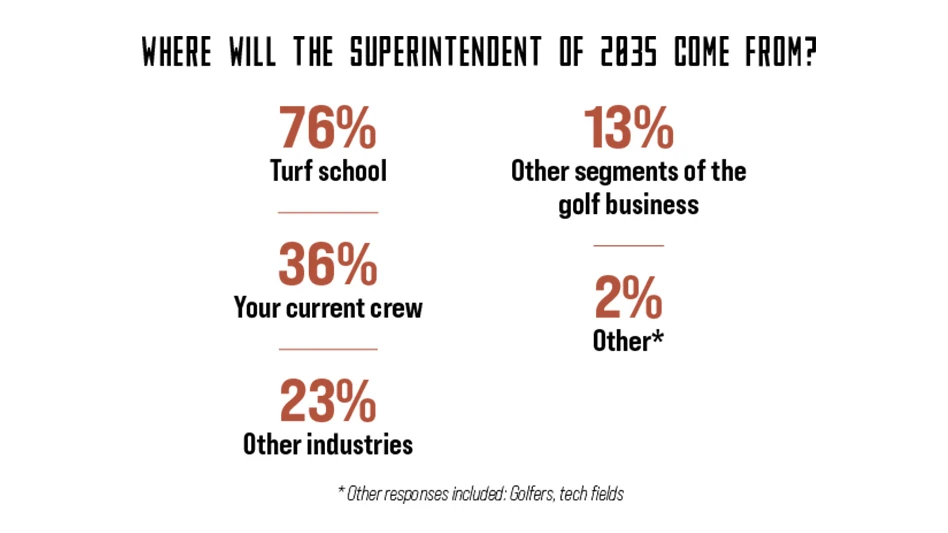
Courtesy of Angelica Carmen
Chris Flick, director of grounds operations at Cog Hill Golf & Country Club in suburban Chicago, shares inspiring ecological practices that extend beyond turf. “I’m a firm believer that a golf course needs to be more than a golf course,” Flick says. At Cog Hill, community relationships are forging ahead and there is a culture for stewardship. While golf and the earth hold hands, fescue and bluegrass mix rough, and bentgrass tees, greens and fairways are maintained with immaculate care for public play.
Cog Hill has four courses, including Dubsdread, where the record is a 62 owned by Tiger Woods. This championship layout witnessed several BMW Championships and numerous other PGA Tour and USGA events, including the Western Open. The facility jives with a Toptracer Range, lessons, junior programs, family golf nights, and social events. A “Growing Green” section on the website details phenomenal environmental accomplishments.
How to start or continue the momentum at your course? Blue-sky happy thoughts work best.
Thinking environmentally
“It’s difficult at times to justify higher costs for an environmental project that the courses will be fine without,” Flick says, “but caring for the environment and the courses is a rewarding challenge.” People notice and appreciate environmental efforts, and tangible results attract customers and members, create positive community attention and can interest seasonal workers.
“We advertise what we’re doing and use visual clues to get people involved,” Flick says. Celebrating Earth Day, creating opportunities for volunteer participation, property-wide recycling, communicating lower chemical/turf inputs and working the numbers helps people connect with an environmental focus. Sharing positive numbers is the most black-and-white way to show the value of environmental efforts. Whether it’s a related decrease in expenses, better water quality figures or increased bird egg counts, numbers make an impact.
Reading material can be a powerful ally, from environmental books for adults and kids sold in the pro shop to relevant articles left near the coffee machine. Biodegradable tees can be promoted. Share your environmental position on Twitter and social media, post information on the website, host school groups for science lessons, and “bring people on the property when it’s not necessarily for golf,” Flick says. “That’s one of our big goals, to introduce people to what we’re doing and show them how to help.”
Water management
There are some big-budget ways to improve water management. An irrigation audit and a new irrigation system will be the most precise and thorough way to evaluate and maximize water efficiency. A course renovation can ensure proper drainage and movement. Maybe it’s time for a different kind of grass. Blue-sky thinking indeed.
Natural algal control will start this year at Cog Hill with barley straw and sterile grass carp helping filter the ponds. Irrigation inputs have been nearly halved through biostimulants and organic plant protectants, which work to provide strong and healthy plants, reduce transpiration and increase stress tolerance.
“The biggest thing we have done for water management is reduce our rough acreage,” Flick says. The team also eliminated extra tees on two courses and worked with ownership to decrease spraying and watering.
“We’ve audited our systems to ensure that the water we do use is efficient and we hand water quite a bit,” says Flick, noting how useful moisture meters are in ensuring only necessary water is used.
Cog Hill is adding a bioswale near the maintenance facility to help filter and clean the rinsate from the equipment washing station. Partially funded by a grant from The FairWays Foundation, research was conducted involving which plants would be most effective while being functional and aesthetically pleasing. Rain barrels throughout the property are a simple idea. Water management takes constant thoughtfulness, and regular readings on property water sources will ensure the water is clean.
Native areas
Transforming 100 acres of rough into native areas has changed more than mowing and irrigation. “It started by just letting it grow,” Flick says. “This is an oak-heavy property and we’re aiming for prairie restoration and oak-savannahs like there used to be.” Reducing maintained acreage has also helped reduce synthetic inputs of pesticides, fungicides and fertilizers. There has been a special focus on fungicide reduction. Prescribed burning also helps build native areas and “we can do that on a small scale.”
Cog Hill also participates in the Monarchs in the Rough program, starting with half an acre about three years ago and propagating milkweed and nectar-producing flowers to more areas throughout the property. Pollinator habitats improve every year and larvae develop and colorfully fly away. Functionality is the focus and other forms of wildlife are showing up for the party.
Wildlife management
“What has impacted wildlife the most are the no-mow areas, just creating habitat and a food source for them,” Flick says. “We have seen a huge increase,” in variety and numbers. The influx contributes to a different feel on the course, adding to the game’s joys (and ensuring errant shots aren’t the only wild things).
“Working with a high school class, we constructed bluebird and bat houses,” Flick says. “The houses feature engraved logos for both the high school and Cog Hill,” and they’re a visible source of pride. The students become curious and comfortable on site and the functionality of the property grows. The bird houses are watched by a group of birding golfers who track nests and eggs.
Cog Hill sports more than a dozen beehives. Brush piles for birds, squirrels, rabbits and more only require stacking a few logs and branches. They provide shelter where there is little ground cover, and, opposed to burning, have the added benefit of releasing carbon into the air slowly as they decay.
Facilities and grounds
There is always room for improvement. The preceision of GPS sprayers can be helpful in dispersing product at the rate and locations needed, and biodiesel offers potential. Recycled concrete aggregate can be used for cart path construction.
Cog Hill has a sustainability expert, Angelica Carmen, and her work is efficient, economical and essential to the ethos of Cog Hill. “She is focused on environmental initiatives and she makes sure they are implemented,” Flick says. Carmen networks for research and to build relationships, considers all aspects of the property, creates exciting public initiatives and does hands-on work that otherwise may be impossible.
“My favorite project has been her construction of the farm. It’s the perfect, tangible example of what I wanted for Cog Hill,” Flick says. Fairway Farms and Apiary started with Flick’s idea to “have a little vegetable garden.” The farm hosts tours and provides up to 3,000 pounds of produce annually for the restaurant. A berry patch, a pumpkin patch and orchard trees are part of the 2021 expansion. “New employees are curious about what we’re doing here and most want to get involved. The Farm is the keystone of our whole sustainability program,” Flick says.
Everything starts small. Everything starts with the seed of an idea. “A golf course is far removed from being a natural landscape, but there are elements of it that can function like one,” Flick says. Look up, enjoy the blue sky, and forge ahead





